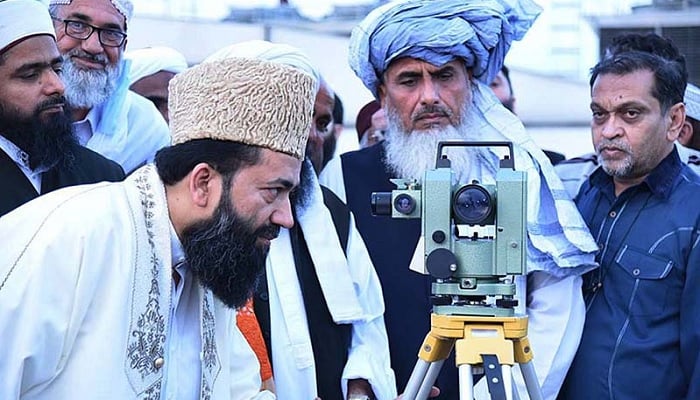Introduction
As the holy month of Ramadan draws to a close, Pakistan’s Ruet-e-Hilal Committee will convene on March 30, 2024, to sight the Shawwal crescent and announce the date for Eid-ul-Fitr, marking the end of fasting and the beginning of celebrations. Regional moon sighting committees across the country will also hold meetings, ensuring a coordinated effort to confirm the sighting. This annual tradition not only reflects Pakistan’s rich Islamic heritage but also highlights the delicate balance between faith, science, and national unity.
The Moon Sighting Process: Tradition Meets Modernity
- Centralized Announcement:
- The Ruet-e-Hilal Committee, led by Chairman Maulana Abdul Khabir Azad, will gather in Islamabad to review testimonies and astronomical data.
- Regional committees in Lahore, Karachi, Quetta, and Peshawar will simultaneously conduct local sightings, submitting reports to the central body.
- Scientific Input:
- Pakistan Space and Upper Atmosphere Research Commission (SUPARCO) provides lunar visibility forecasts, blending tradition with technology.
- Despite advancements, the final decision relies on visual sightings, adhering to Islamic jurisprudence.
- Public Engagement:
- Citizens are encouraged to report sightings via hotlines or social media, fostering community involvement.
Why This Matters
- Cultural Unity:
- Eid-ul-Fitr is a unifying force, transcending ethnic and provincial divides. A centralized announcement minimizes regional discrepancies, promoting national cohesion.
- Economic Impact:
- Eid drives a $3–4 billion surge in consumer spending, benefiting textiles, food, and retail sectors.
- Charity (Zakat): Over $1 billion is distributed annually, supporting marginalized communities.
- Global Soft Power:
- Pakistan’s Eid celebrations resonate with the global Muslim diaspora, strengthening cultural ties and remittance inflows (March 2024: $2.8 billion).

Challenges and Criticisms
- Regional Disputes:
- Conflicting sightings (e.g., Sindh vs. Punjab in 2023) risk social fragmentation. Advocates call for a unified, science-backed framework.
- Public Readiness:
- Last-minute announcements disrupt travel and business planning. Pre-Eid advisories could mitigate economic losses.
- Technological Gaps:
- Pakistan lags behind Saudi Arabia and UAE in adopting astronomical tools for moon sightings.
The Road Ahead: Balancing Tradition and Progress
- Tech Integration: Propose live-streamed committee meetings and moon-tracking apps to enhance transparency.
- Public Awareness: Launch campaigns to educate citizens on lunar science and Islamic jurisprudence.
- Economic Planning: Encourage industries to prepare for Eid-driven demand spikes, ensuring smooth supply chains.
Conclusion: A Celebration of Faith and Unity
The Ruet-e-Hilal Committee’s annual moon sighting is more than a religious ritual—it’s a testament to Pakistan’s ability to harmonize tradition with modernity. As families prepare for Eid-ul-Fitr, the process serves as a reminder of the shared values that bind the nation together. By addressing challenges like regional disparities and tech gaps, Pakistan can transform this tradition into a beacon of unity, innovation, and inclusive growth.










